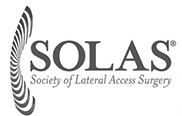Anterior Cervical Discectomy

Anterior cervical discectomy is an operative procedure to relieve pressure or compression on the nerve roots and/or the spinal cord because of a herniated disc (damaged disc) or a bone spur.
Pain in the neck and extremities is a common symptom of intervertebral disc damage or herniation. During herniation, the tough, outer ring (annulus fibrosus) of the intervertebral disc breaks due to which the soft jelly-like center (nucleus pulposus) bulges out and puts pressure on the neural structures, such as nerve roots and/or the spinal cord. Bone spurs or osteophytes, bony outgrowths, which occur due to the accumulation of calcium in spine joints, may also contribute to these problems.
Discectomy refers to the removal of total or a part of an intervertebral disc. This anterior cervical discectomy involves making an incision in the front side of the neck (anterior cervical spine), followed by the removal of disc material and/or a part of the bone around the nerve roots and/or spinal cord to relieve the pressure on neural structures and provide them with additional space.
Indications
Compression or pressure on the neural structures- nerve roots or spinal cord- due to herniated disc or bone spur may irritate the neural structures and cause pain in the neck and/or arms, numbness or weakness in the arms, forearms or fingers, and lack of coordination. As most of the nerves of the body pass through the neck region from the brain, pressure on the spinal cord in the neck region (cervical spine) can be problematic. Patients with these symptoms are potential candidates for this surgical procedure.
The procedure
An overview of what happens during anterior cervical discectomy is as follows:
Incision
The surgical procedure will be performed with you lying flat on a table on your back. A minor incision is made at the front of your neck to the side.
Exposure
Your surgeon exposes the region of compression (pressure zone) by spreading apart the soft tissues- fat and muscle, in the neck region.
Removal
The disc material or a portion of the bone compressing the nerve roots and/or spinal cord will be removed, to relieve the pressure on nerve structures and provide them enough space.
Closure
After the removal, your surgeon closes and dresses the incision.
Recovery
A specific post-operative recovery/exercise plan will be given by your physician to help you return to normal activity at the earliest. The duration of hospital stay depends on this treatment plan. You will be able to wake up and walk by the end of the first day after the surgery.
Risks and Complications
All surgeries carry risk and it is important to understand the risks of the procedure to make an informed decision to go ahead with the surgery. In addition to the anesthetic complications, spinal surgery is associated with some potential risks such as infection, blood loss, blood clots, nerve damage, and bowel and bladder problems.
Talk to your surgeon about any concerns you have about Anterior Cervical Discectomy surgery.
Related Topics:
- Anterior Cervical Discectomy
- Anterior Lumbar Interbody Fusion
- Cervical Decompression
- Cervical Disc Replacement
- Cervical Foraminotomy
- Cervical Laminectomy
- Cervical Spine Fusion
- Complex Spine Surgery
- Direct Lateral Interbody Fusion
- Oblique Lumbar Inter Body Fusion
- ExcelsiusGPS® Robotic Navigation
- Lumbar Decompression
- Lumbar Discectomy
- Lumbar Fusion
- Lumbar Laminectomy
- Minimally Invasive Spinal Surgery
- Neck Surgery
- Posterior Lumbar Interbody Fusion
- Transforaminal Lumbar Interbody Fusion








